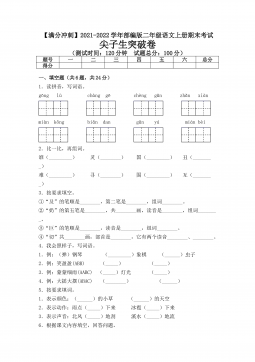电信营业厅服务营销策略研究
摘要自2002年前电信重组以来,随着中国电信与中国网通的挂牌成立,我国电信业正式确立了中国电信、中国网通、中国移动、中国联通、中国卫通和铁通六家运营商共存的市场格局,中国电信服务市场逐步形成了从最初个别运营商垄断市场到数家大运营商主导、多家小运营商参与、新运营商不断加入的电信服务市场竞争新格局。不同运营商之间呈现出相互竞争的态势,尤其是固网领域,出现了中国电信和中国网通展开比较竞争,联通和铁通共同入市的局面,同时两大固网运营商也将在对方地域相互渗透展开面对面的较量。格局的变化导致电信市场的重新洗牌,中国移动上升为我国最大的电信运营商,中国电信则退至次席。由于各电信企业的市场占有率均低于40%,...
相关推荐
-
5 二年级语文上册期末教学质量检测试卷(含答案)部编版VIP免费

 2024-11-19 12
2024-11-19 12 -
4 二年级语文上册期末教学质量检测试卷(含答案)部编版VIP免费

 2024-11-19 41
2024-11-19 41 -
3 二年级语文上册期末教学质量检测试卷(含答案)部编版VIP免费

 2024-11-19 20
2024-11-19 20 -
2 二年级语文上册期末教学质量检测试卷(含答案)部编版VIP免费

 2024-11-19 29
2024-11-19 29 -
1二年级语文上册期末教学质量检测试卷(含答案)部编版VIP免费

 2024-11-19 16
2024-11-19 16 -
【满分冲刺】2021-2022学年二年级语文上册期末考试尖子生突破卷 部编版(含答案)VIP免费

 2024-11-19 75
2024-11-19 75 -
【精品】二年级上册语文试题-期中考试模拟卷-部编版(含答案)VIP免费

 2024-11-19 80
2024-11-19 80 -
【冲刺百分】二年语文上册期末冲刺模拟试卷(B) (有答案)VIP免费

 2024-11-19 23
2024-11-19 23 -
【冲刺百分】二年语文上册期末冲刺模拟试卷(A) (有答案)VIP免费

 2024-11-19 16
2024-11-19 16 -
第六单元试题(B)二年级上册语文(部编含答案)VIP免费

 2024-11-19 20
2024-11-19 20
相关内容
-

【满分冲刺】2021-2022学年二年级语文上册期末考试尖子生突破卷 部编版(含答案)
分类:中小学教育资料
时间:2024-11-19
标签:无
格式:DOC
价格:5 积分
-

【精品】二年级上册语文试题-期中考试模拟卷-部编版(含答案)
分类:中小学教育资料
时间:2024-11-19
标签:无
格式:DOC
价格:5 积分
-

【冲刺百分】二年语文上册期末冲刺模拟试卷(B) (有答案)
分类:中小学教育资料
时间:2024-11-19
标签:无
格式:DOCX
价格:5 积分
-

【冲刺百分】二年语文上册期末冲刺模拟试卷(A) (有答案)
分类:中小学教育资料
时间:2024-11-19
标签:无
格式:DOCX
价格:5 积分
-

第六单元试题(B)二年级上册语文(部编含答案)
分类:中小学教育资料
时间:2024-11-19
标签:无
格式:DOC
价格:5 积分






